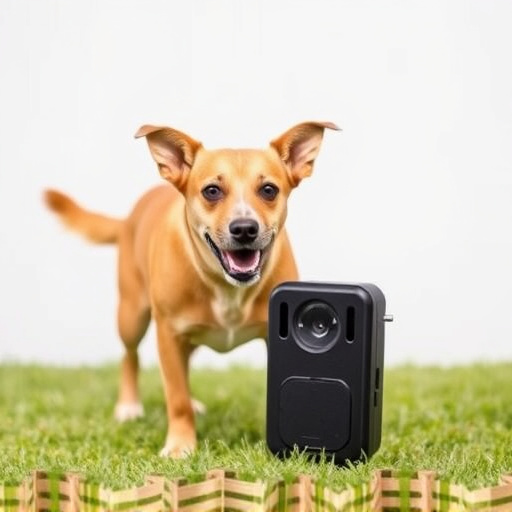Electronic dog repellers use high-frequency sounds (ultrasonic or infrasonic) that are inaudible to humans but disrupt dogs' hearing and communication. The effective distance of these devices, influenced by weather, terrain, and structures, is crucial for successful deterrence. Optimal performance requires a frequency range of 3-9 kHz covering areas between 75 to 150 feet (23-46 meters). Factors like broad frequency spectra, environmental conditions, signal obstructions, and power output determine coverage area; device selection should balance efficacy with safety considerations for humans and other animals.
“Unleash a new approach to pet management with an effective dog repeller. This guide explores the science behind these electronic deterrents, delving into the technology that keeps canines at bay. We dissect the crucial element of frequency ranges and how they impact deterrence success. Furthermore, discover the factors influencing the coverage distance of these devices, offering a comprehensive strategy for choosing the ideal electronic dog deterrent for your space. Maximize effectiveness, minimize distress.”
- Understanding Dog Repeller Technology and Its Principles
- Defining the Effective Frequency Range for Optimal Deterrence
- Factors Influencing the Coverage Distance of Electronic Dog Detersrrs
Understanding Dog Repeller Technology and Its Principles
Dog repellers, also known as electronic dog deterrents, utilize specific sound technologies to discourage unwanted canine behavior. These devices emit high-frequency sounds that are typically inaudible to humans but effectively disrupt dogs’ hearing and communication. The principle behind this technology lies in targeting the dog’s sensitive auditory system, which can detect and distinguish frequencies beyond human perception. When activated, these repellers project ultrasonic or infrasonic waves within an effective distance, creating a sound pattern that prompts dogs to leave the area.
The concept is based on the idea that dogs, being more sensitive listeners than humans, will hear and react to these hidden sounds. The frequency range of these electronic deterrents varies, but many modern models offer adjustable settings to cater to different environments and dog breeds. Understanding the effective distance—the range within which the sounds are audible and impactful—is crucial when selecting a dog repeller. Factors like weather conditions, terrain, and surrounding structures can influence this distance, ensuring users choose a device suitable for their needs and capable of covering the desired area effectively.
Defining the Effective Frequency Range for Optimal Deterrence
Defining the effective frequency range is key in determining an electronic dog deterrent’s optimal deterrence capabilities. These devices operate by emitting specific sound frequencies designed to disrupt or frighten dogs, encouraging them to leave the area. The effectiveness of this disruption directly correlates with the device’s ability to reach the targeted distance – what we refer to as the effective distance.
An ideal electronic dog repeller should have a frequency range that spans from 3 to 9 kHz, which are known to be particularly annoying to dogs without causing any harm. This range ensures that the sound reaches a sufficient effective distance, typically between 75 to 150 feet (23 to 46 meters), depending on environmental factors like terrain and weather conditions. Devices operating outside this range may not achieve the desired results or could potentially distress other animals or humans in close proximity.
Factors Influencing the Coverage Distance of Electronic Dog Detersrrs
The effective distance an electronic dog deterrent can cover depends on several key factors. One major factor is the specific frequency range used by the device. Different dogs have varying sensitivities to ultrasonic or pulsating sounds, so a broader frequency spectrum can increase the likelihood of deterring more dogs over a larger area. Additionally, environmental conditions play a crucial role; factors like terrain, vegetation density, and weather can all impact signal strength and penetration. Obstructions such as walls or fences may also limit the coverage distance, particularly for devices relying on line-of-sight transmission.
Another influencing aspect is the power output of the electronic deterrent. Higher-powered devices can penetrate further and potentially reach dogs in adjacent areas. However, it’s essential to balance power with safety considerations to avoid causing harm or distress to humans or other animals nearby. Furthermore, the size and type of the dog population in the targeted area should be taken into account. Smaller breeds might be deterred at shorter distances while larger ones may require signals stronger and more persistent to trigger a reaction.
In conclusion, understanding the effective frequency range of an electronic dog deterrent is key to achieving optimal deterrence. By leveraging the right technology and considering factors like coverage distance, these devices can offer a humane and effective solution for managing canine behavior. When selecting an electronic dog repeller, ensure it’s tailored to your needs based on the specific principles and ranges discussed in this article, allowing you to maintain peace and harmony in your space.
